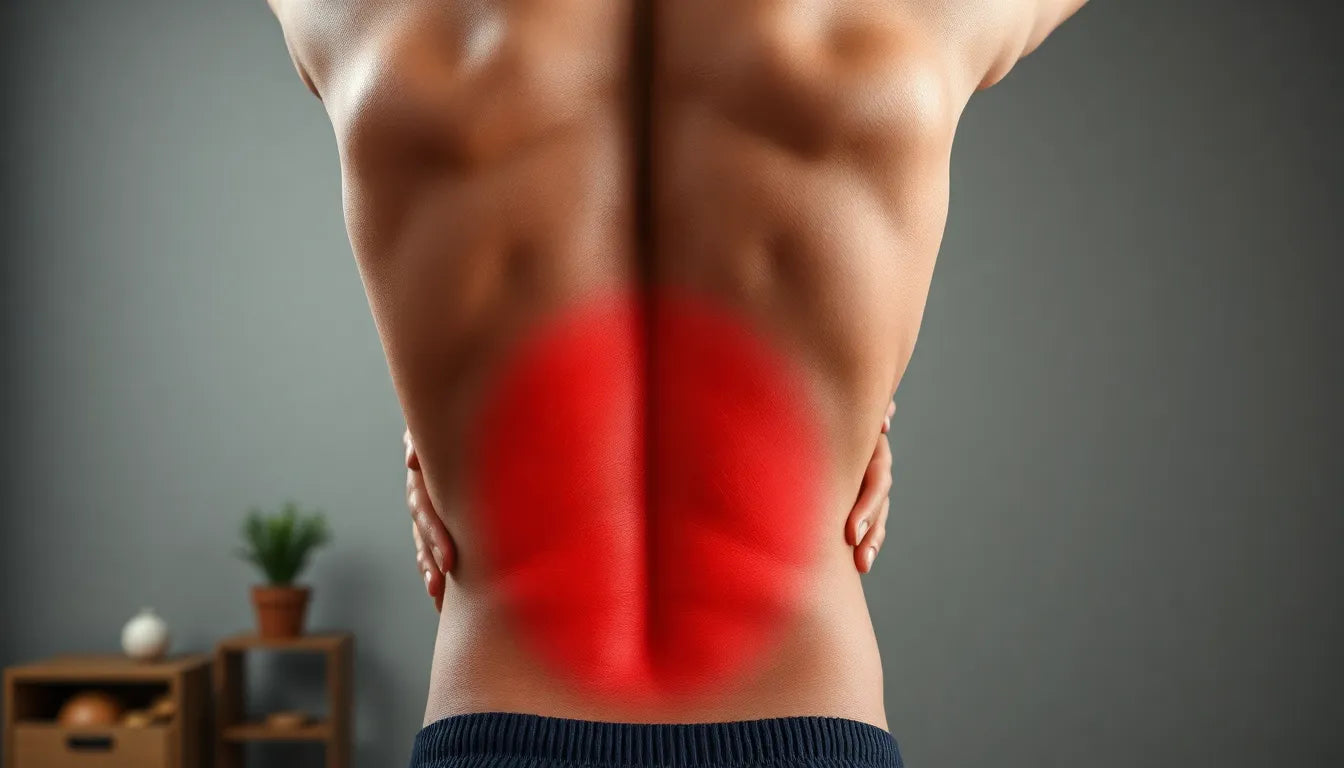Cervical herniated disc headaches, often referred to as cervicogenic headaches, are a common yet often misunderstood condition that can significantly impact daily life. These headaches originate from issues in the cervical spine, particularly involving herniated discs, and can mimic the symptoms of migraines, making them challenging to diagnose and manage effectively. Understanding the connection between cervical spine issues and these headaches is crucial for finding relief and improving quality of life.
Understanding cervicogenic headaches
Cervicogenic headaches arise when pain is referred from the cervical spine to the head. This type of headache is typically unilateral, meaning it affects one side of the head, and is often accompanied by neck pain. The discomfort may radiate from the neck to the head, creating a sensation that is sometimes mistaken for a migraine. The prevalence of these headaches is significant, as many individuals experience them due to various cervical spine issues, including herniated discs, osteoarthritis, or nerve irritation.
The impact of cervicogenic headaches on daily life can be profound. They not only cause physical discomfort but also affect productivity, mood, and overall well-being. The ability of these headaches to mimic migraine symptoms adds to the complexity, as individuals may struggle to identify the root cause and find appropriate treatment. This highlights the importance of understanding the causes and available treatments to achieve effective relief.
Common symptoms and diagnostic challenges
The symptoms of cervical herniated disc headaches can vary but typically include a unilateral headache, neck pain, and potential radiating discomfort to the head. These headaches often begin in the neck region and can extend to the forehead, temples, or around the eyes, leading to confusion with other headache types such as migraines or tension headaches.
One of the primary challenges in managing cervicogenic headaches is distinguishing them from other headache disorders. The overlap in symptoms can make diagnosis difficult, requiring a careful evaluation of the individual's medical history, symptoms, and potential triggers. A comprehensive understanding of these headaches is essential for healthcare providers to differentiate them from primary headache disorders and provide targeted treatment options.
By recognizing the unique characteristics of cervical herniated disc headaches and understanding their connection to cervical spine issues, individuals can work with healthcare professionals to explore effective treatments and management strategies. This knowledge empowers those affected to take proactive steps towards relief and improved quality of life.
causes and diagnosis of cervical herniated disc headaches
Cervical herniated disc headaches, also known as cervicogenic headaches, are primarily caused by structural issues within the cervical spine. A herniated disc in the neck can exert pressure on nearby nerves, leading to pain that radiates to the head. This pressure can be exacerbated by other conditions like osteoarthritis, which causes wear and tear on the cervical vertebrae, further irritating the nerves. Additionally, muscle tension and poor posture can contribute to these headaches by straining the cervical spine.
Diagnosing cervicogenic headaches involves a comprehensive approach, starting with a detailed physical examination and an analysis of the patient's medical history. Physicians often employ imaging techniques such as MRI or CT scans to confirm the presence of a herniated disc or other structural abnormalities. These diagnostic tools are crucial for differentiating cervicogenic headaches from primary headache disorders like migraines, as they provide a clear picture of the cervical spine's condition.
Accurate diagnosis is essential for effective treatment, as it guides the choice of therapeutic interventions. Differentiating cervicogenic headaches from other types requires a targeted evaluation of symptoms and potential spinal causes, ensuring that treatment plans address the specific underlying issues.
treatment approaches for cervical herniated disc headaches
Treatment for cervical herniated disc headaches typically begins with conservative approaches. Physical therapy is often the first line of treatment, involving customised exercise plans, manual therapy, and postural retraining. These therapies aim to strengthen the neck muscles, improve flexibility, and correct postural issues that may contribute to headaches.

Men's Posture Shirt™ - White
Patenteret Posture Shirt stimulerer muskler og kan hjælpe ved spændinger og smerte.
Medications can also play a significant role in managing pain. Nonsteroidal anti-inflammatory drugs (NSAIDs) are commonly used to reduce inflammation and alleviate pain. In cases where muscle tension is a contributing factor, muscle relaxants may be prescribed. Additionally, medications like gabapentin and duloxetine, which are typically used for nerve pain, can be effective in managing chronic cervicogenic headaches.
For individuals who do not achieve sufficient relief from conservative treatments, interventional procedures may be considered. Injection therapies, such as nerve blocks, facet joint injections, and corticosteroid injections, can provide temporary pain relief. These procedures target specific nerves or joints to reduce inflammation and interrupt pain signals, facilitating further physical therapy or longer-term pain management strategies.
Alternative therapies are increasingly popular as complementary options for managing cervicogenic headaches. Chiropractic care, acupuncture, yoga, and massage therapy can provide additional relief and support overall well-being. These therapies focus on improving alignment, reducing muscle tension, and enhancing relaxation, contributing to a holistic approach to headache management.
In summary, a tiered treatment approach is often most effective for managing cervical herniated disc headaches. Starting with conservative measures and progressing to more interventional options as needed ensures that individuals receive tailored care that addresses their specific needs. By combining medical treatments with lifestyle modifications and alternative therapies, patients can achieve significant relief and improve their quality of life.
Advanced treatment options for cervical herniated disc headaches
When conservative and interventional treatments do not provide adequate relief from cervical herniated disc headaches, surgical interventions may be considered. These procedures are typically reserved for severe cases where other methods have failed to alleviate symptoms. One common surgical option is anterior cervical discectomy and fusion (ACDF). This procedure involves removing the herniated disc to relieve pressure on the nerves, followed by fusing the adjacent vertebrae to stabilize the cervical spine.
Another surgical technique is cervical disc replacement, which involves replacing the damaged disc with an artificial one. This option aims to maintain more natural neck motion compared to fusion. Both procedures require careful evaluation by a spine specialist to determine the most appropriate approach based on the individual’s condition and overall health.
Lifestyle modifications for prevention and management
In addition to medical treatments, lifestyle modifications play a crucial role in managing and preventing cervical herniated disc headaches. Ergonomic adjustments in the workplace and at home can significantly reduce strain on the cervical spine. Ensuring that workstations are set up to promote good posture, such as adjusting chair height and monitor position, can help prevent neck pain and associated headaches.

Women's Posture Shirt™ Zipper - Black
Posture Shirt™ med lynlås hjælper med at forbedre din holdning og lindre smerter.
Maintaining proper posture throughout the day is essential. Simple actions like sitting up straight, keeping the shoulders relaxed, and avoiding prolonged periods of looking down at screens can alleviate neck strain. Regular breaks to stretch and move around are also beneficial, reducing the risk of tension build-up in the neck and shoulders.
Incorporating exercises that strengthen the neck and upper back muscles can support the spine and improve posture. Activities like yoga and Pilates can enhance flexibility and promote relaxation, contributing to overall well-being and headache prevention.
Frequently Asked Questions
What are the primary symptoms of cervicogenic headaches?
The primary symptoms of cervicogenic headaches include unilateral headache, neck pain, and possible radiating pain to the head. These headaches often start in the neck and can extend to the forehead, temples, or around the eyes.
How are cervicogenic headaches diagnosed?
Cervicogenic headaches are diagnosed through a combination of physical exams, patient history, and imaging techniques such as MRI or CT scans. These methods help confirm disc involvement and differentiate these headaches from other types.
What are the first steps in treating cervical herniated disc headaches?
Initial treatment steps include physical therapy, the use of medications like NSAIDs, and considering lifestyle changes such as ergonomic adjustments and posture management to alleviate symptoms.
When should surgical intervention be considered?
Surgical intervention is considered when conservative and interventional treatments fail to provide relief. It is typically reserved for severe or persistent symptoms that significantly impact quality of life.
Can lifestyle changes help in managing these headaches?
Yes, lifestyle changes such as ergonomic adjustments, posture management, and taking regular breaks can significantly aid in the prevention and management of cervicogenic headaches.
Källor
- MSPainCenter. "Cervicogenic Headaches: When Neck Pain Causes Migraines."
- Johnson, B. "Cervicogenic Headache." Spine Surgeon Irvine.
- MS Physical Therapy. "Neck Pain and Headaches: Identifying and Treating Cervicogenic Headaches."
- NCBI. "Cervicogenic Headache."
- WebMD. "Cervicogenic Headache Facts."
- University of Maryland Medical Center. "Cervical Radiculopathy."
- American Migraine Foundation. "Cervicogenic Headache."
- Instituto Clavel. "Neck and Back Pain."
- Cleveland Clinic. "Cervicogenic Headache."
- Precision Health. "Cervicogenic Headaches."
- Spine-Health. "Cervical Herniated Disc Symptoms and Treatment Options."
- Florida Surgery Consultants. "5 Common Symptoms of a Herniated Disc in the Neck."


















